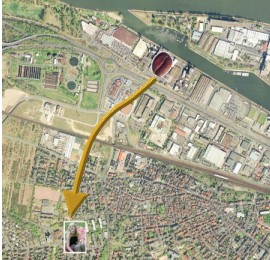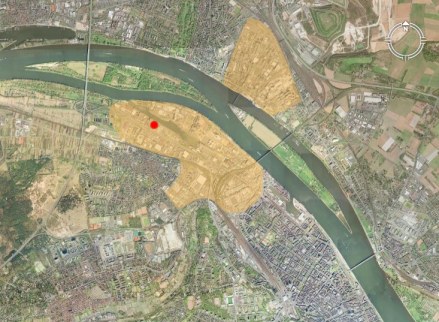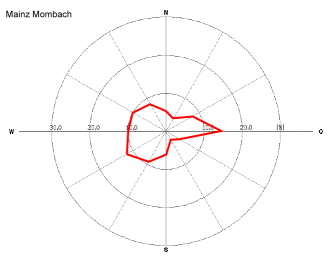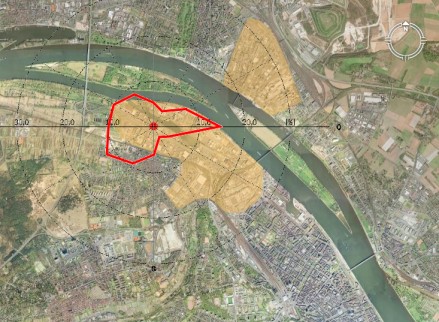 > ACCENT en > UQ 2 Mar 07 Urban air > F: Coffee in the wind > A: Town planning
> ACCENT en > UQ 2 Mar 07 Urban air > F: Coffee in the wind > A: Town planning
|
Where does the coffee wind come from and where do we build a plant? |
|
Question 2: Claus points at another map: Look! Here, the industrial areas and business parks are marked in orange. The red dot is the factory where the coffee odour came from. Do you think it is at an inappropriate location? |
|
Question 2: Discuss in the classroom, why the installation of an industrial plant next to residential zones may cause problems. --- We pursue the story of Katja and Claus. Katja looks at Claus: I would say it depends on where the wind comes from, don't you think? But the wind does not come from the same direction all the time. I see it if I hold up a blade of grass in the wind. |
That's right! Here you seen an annual wind rose. Imagine if the centre of the wind rose were here, where we are standing. You can slowly turn around and look in 12 different directions. For each of the twelve directions, the wind rose tells you the likelihood, that the wind is coming from there. For westerly wind it is about 10%, for easterly 15%. But westerly winds generally more likely than easterly winds. |
|
|
Katja is nodding. Just a minute. That means the wind is often coming from the west or northwest or southwest and blows in easterly directions. So the coffee in the wind goes to ....hmmm |
|
|
|
Well ... yes. The coffee goes most of the time over the river ... and on the other side there are no actual housing areas. Katja is getting curious. Where do the air pollutants come from? Air pollutants come from industries, from power plants and cars, but also households release them to the air. But some are also natural. Many pollutants react chemically in the air, therefore the composition of polluted air changes. But pollutants are not only formed ... they also disappear again. Maybe we can speak about it tonight again. I need to work a bit now... Continuation: Sources and sinks
|




